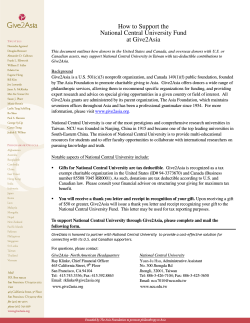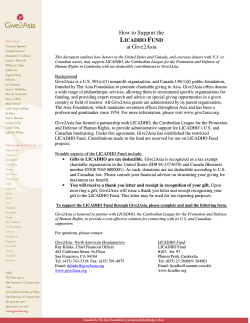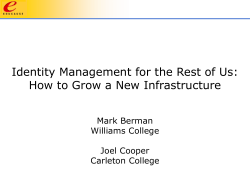
HLA Diversity: What is the Optimal Number of Donors ?
Registry Size vs. Transplantable Patients 80 70 60 50 40 percentage of patients with donors 30 0 ZKDR – Zentrales Knochenmarkspender-Register Deutschland (German National Stem Cell Donor Registry) Ulm, Germany 20 Carlheinz R. Müller identical phenotypes identical diplotypes 10 HLA Diversity: What is the Optimal Number of Donors ? 90 100 Registry size and donor identification rate in CH 1.000 10.000 100.000 1.000.000 10.000.000 number of donors in the registry What is Optimal? 1.000 10.000 100.000 1.000.000 Marginal recruitment efficiency rate in CH donors with identical HLA−A,B,DR−phenotypes donors with identical HLA−A,B,DR−haplotypes 100 donors required for one additional percentage point 10.000.000 Marginal „Cost“ per Tx-Patient 1.000 10.000 100.000 1.000.000 10.000.000 number of donors in the registry Unpleasant Surprise Any model that allows to calculate an Optimal number of donors for a registry has to put a price tag on the benefit !: quality adjusted life years (QALY) gained × price / value of a gained QALY. Parameters patients per year average cost of a search l T R nP D fraction of patients (with donors) actually transplanted survival rate cost of a successful transplant cost of an unsuccessful transplant benefit QALY QALY per survivor t s S F Q y donor "life" time on the registry donor recruitment cost donor retention cost per year !"!#$%&'!(&)*%$!"%&+ !",-.&&& %$$ Example of an Analysis: Input and Output Variables !"$ 9./ 5/:*39;:*5.2 9:54.*5 9./ 9:54.*5&!"%!'!( cost without transplant cost of succ. transplants cost of unsucc. transplants survival benefit balance balance per patient / transplant !$$ "$ nP ×m ×t (nP-nT) ×D nT ×s ×( D + S ) nT ×(1 – s) ×( D + U ) nT ×s ×Q ×y P – CN – CS – CU – CR B/nP , B/nT !"!#$% 9./ 9:54.*5 number of transplants nD×(T⁄l+R) $ % patients with donors nD CR m nT CN CS CU P B BP , BT #"$ cost of the registry #!$$ number of donors !'$$$ !$'$$$ !$$'$$$ !'$$$'$$$ *+,-./ 01 20*0/3 4* 56. /.7435/8 !"#"$#% & %$$#"$$$#$'(#$'" & )$$#!"$#"$#!" Lesson Learned so Far " Even in a simplistic model, the optimal number of donors depends on a lot of co-variables. " The number of patients („market size“) and the cost of recruitment and typing are the major registry-linked influence factors. " The cost of transplants and value of a QALY are the most critical co-variables. Critical Factors for Success " Quantity " Quality " Efficiency " Service " Psychology " The major missing elements in those calculations are quality issues and external influences leading to complex interactions. Send questions to Thanks to The ZKRD-team, in particular Werner Bochtler, Hans-Peter Eberhard, Ulrike Feldmann and Markus Beth. Cornelie Haag (Dresden) Jon van Rood, Matchteld Oudshoorn, Jack Bakker, Angelo Melis http://www.bmdw.org ! Steven G. E. Marsh and James Robinson http://hla.alleles.org/wmda/index.html! ! carlheinz.mueller@zkrd.de !$'$$$'$$$
© Copyright 2025





















